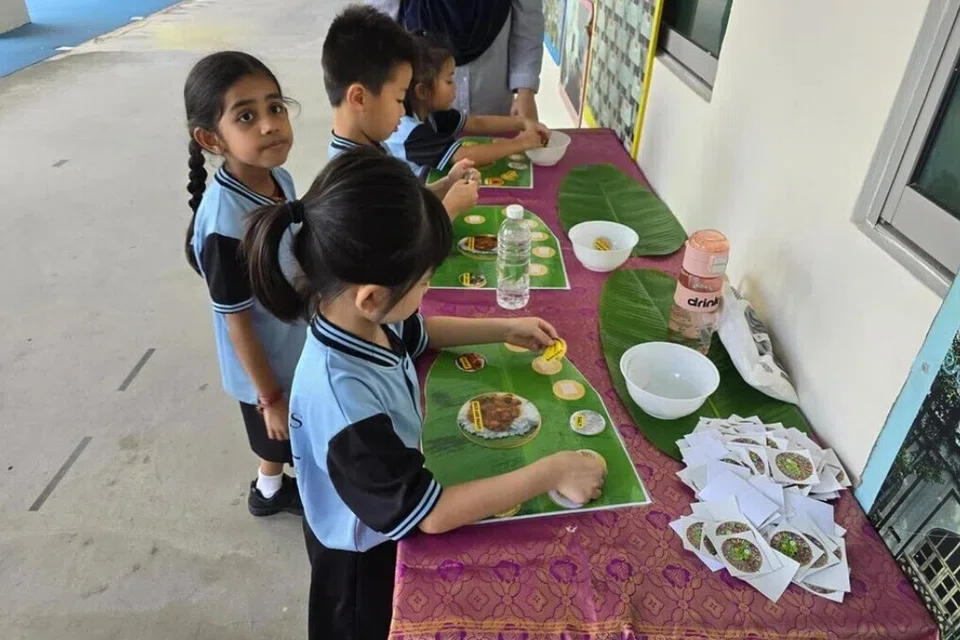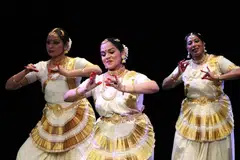Recruiting local Tamil language teachers remains a challenge, even as more people are signing up to train as mother-tongue language teachers.
Only 4 per cent of local Tamil language teacher applicants were hired over the past five years, Education Minister Desmond Lee had said in a written parliamentary reply on Sept 24.
Foreign applicants – who make up about 20 per cent of Tamil teaching applications – had a success rate of around 2 per cent.
“We prioritise hiring of local teachers,” he said. “However, we do recruit foreign teachers for certain subjects to supplement our local teaching workforce, if we are unable to recruit enough locals. Tamil language is one of these subjects.”
Foreign candidates are assessed on their ability to assimilate into the local school context, as well as their track record and teaching experience, he added in response to Dr Hamid Razak (West Coast-Jurong West GRC), who had asked about the challenges in recruiting Tamil-language teachers.
The proportion of students taking Tamil in schools has remained stable over the last five years, said the Ministry of Education (MOE).
Between 2020 and 2024, primary schools saw an annual average of about 72 per cent of pupils taking Chinese, 17 per cent taking Malay and 6 per cent taking Tamil.
In secondary schools over the same period, the annual averages were about 67 per cent taking Chinese, 19 per cent Malay and 6 per cent Tamil. The remaining students offered other non-Tamil Indian languages, Asian languages or foreign languages.
The ministry said more people are enrolling in teacher preparatory programmes at the National Institute of Education, namely the Diploma of Education programme and the Postgraduate Diploma in Education.
The number of applicants for these programmes for mother tongue languages grew from 87 in 2022 to 140 in 2024.
MOE said the overall number of new mother tongue language teachers joining the profession has also grown over the same period.
It did not give exact figures but, on average, across all three languages, MOE receives about 1,800 applications for Chinese teaching positions and 800 for Malay each year, alongside 750 for Tamil.
“The actual number of recruits hired is variable, depending on the quality of applicants and the projected demand for the teaching subject,” the ministry said.
It has made efforts to strengthen the recruitment pipeline through teaching internships, career fairs and outreach to undergraduates and mid-career professionals.
MOE has also expanded training pathways to grow the teacher pipeline, from teaching internships for A-level students to sponsorships for undergraduates, graduates and mid-career professionals.
Between 2022 and 2024, an average of five mother tongue language teaching interns joined MOE every year and during that time, one intern became a primary school Tamil language teacher.
For Tamil specifically, the ministry encourages early interest in the language, identifies older students with aptitude, and offers mentorship and training for suitable candidates.
Madam Normanisha Sarmani, who has taught Tamil for 22 years, described the language as a “cultural anchor” in Singapore. “When we invest in strong Tamil teachers, we are safeguarding a heritage that deserves to thrive.”
The West View Primary School teacher warned of declining interest in Tamil among families and children, which then affects the next generation of potential teachers.
“Some students do not understand the importance of Tamil and see it as just an examination subject,” she said, adding that simplified concepts and leaving out aspects of the language’s history limit students’ exposure to its depth and richness.
Her class sizes have fallen from 20 pupils a decade ago to as few as five in recent years.
When students do not feel proud of their heritage and language, fewer people are motivated to become teachers, she said.
This, in turn, limits the pool of educators who can inspire future learners, she added.
“When families speak Tamil with love, pride and consistency, children grow up seeing the language as a living part of their identity, not just a subject in school,” said Madam Normanisha, who engages students through technology and cultural celebrations.
Apart from using artificial intelligence (AI) tools such as Suno and Canva to create animated stories, she designed an alphabet game to allow parents to learn Tamil alongside their children at home, and held Zoom sessions with her school’s Tamil Language Club to share forgotten folk tales.
In school, she organised an event for Pongal, a Hindu festival, where she cooked traditional pongal (rice in boiling milk) on a charcoal stove and got pupils to “milk a cow”, allowing them to experience festival rituals first hand.
To do this, she converted a table into a makeshift “cow” by drilling two holes and attaching mineral water bottles to it, and fitting rubber gloves to the bottles to simulate udders. She filled the gloves with a mixture of rice powder and water to mimic milk. By pressing the gloves to extract the liquid, students had an interactive experience of the traditional milking process.
For Bukit View Secondary School’s Tamil teacher, Mr Ramasamy Stalin, nurturing a love for the language starts with meeting the needs of his students.
“We strive to make the language come alive by connecting it to students’ lived experiences,” he said. This includes teaching stories that highlight empathy and compassion and relating them to the modern context, which helps students see that the values in Tamil heritage remain relevant,” he added.
Using tools like AI to tailor his lessons, he makes his classroom a “safe space” for students to speak the language freely – mistakes and all.
He gets them to create quizzes and games to share with their peers, helping them to see the value of Tamil by creating with it, so that they develop a love for the language.
He said: “I can see the sparks of interest there because they designed something for their peers in the mother tongue language.”
The mindsets of students have shifted, he said.
“(They) are no longer just content with learning the language,” Mr Stalin said, adding that they enjoy making use of technology, like vlogging about Pongal while using the language purposefully.
“They see value in learning how to use the language, rather than just learning it,” he said.
The Straits Times



